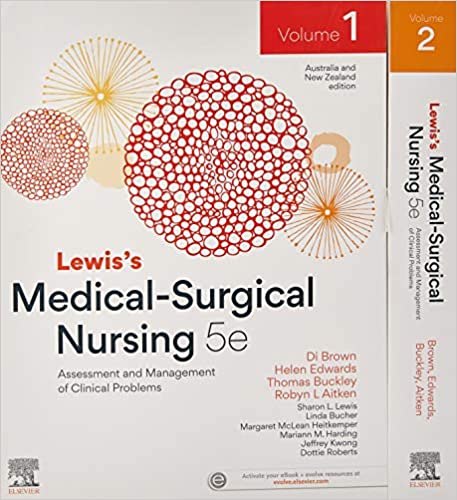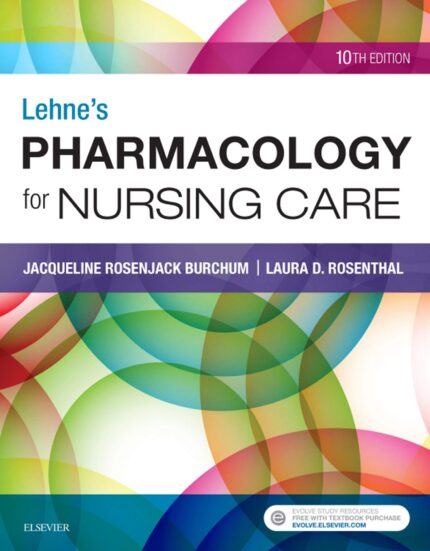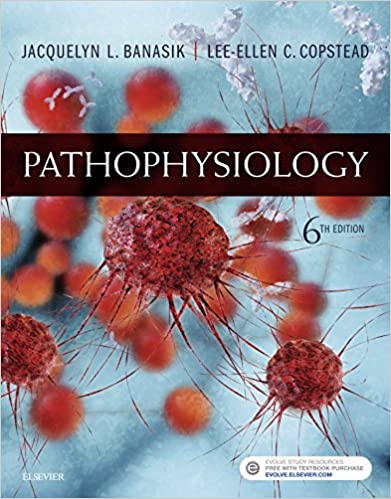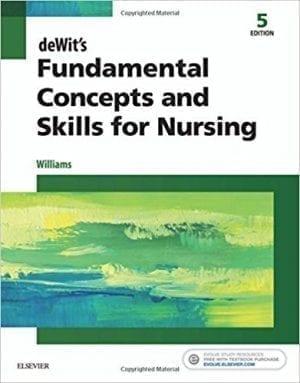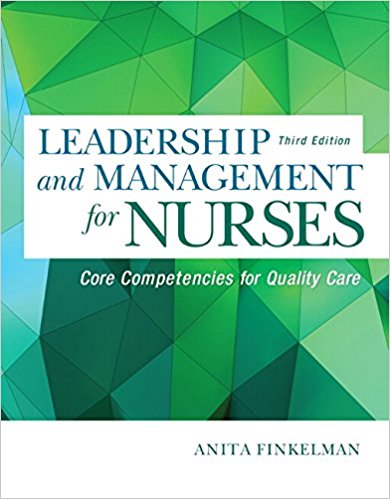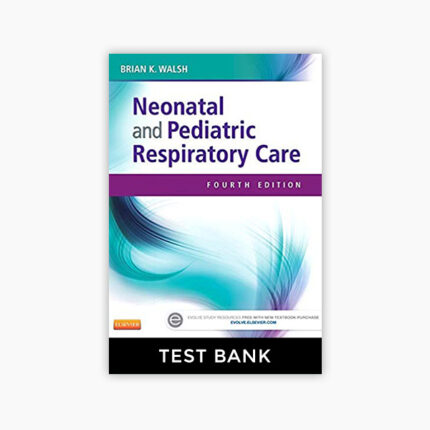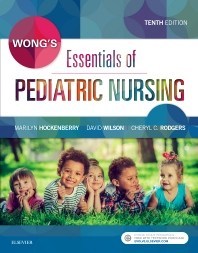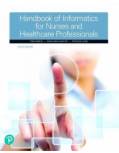Test Bank for Lewis’s Medical-Surgical Nursing 5th Australian Edition Brown
Chapter 01: The importance of nursing
MULTIPLE CHOICE
1. The nurse completes an admission database and explains that the plan of care and discharge goals will be developed with the patient’s input. The patient states, “How is this different from
what the doctor does?” Which response would be most appropriate for the nurse to make?
a. “The role of the nurse is to administer medications and other treatments prescribed
by your doctor.”
b. “The nurse’s job is to help the doctor by collecting information and
communicating any problems that occur.”
c. “Nurses perform many of the same procedures as the doctor, but nurses are with
the patients for a longer time than the doctor.”
d. “In addition to caring for you while you are sick, the nurses will assist you to
develop an individualized plan to maintain your health.”
ANS: D
This response is consistent with the American Nurses Association (ANA) definition of
nursing, which describes the role of nurses in promoting health. The other responses describe
some of the dependent and collaborative functions of the nursing role but do not accurately
describe the nurse’s role in the health care system.
2. The nurse describes to a student nurse how to use evidence-based practice guidelines when
caring for patients. Which statement, if made by the nurse, would be the most accurate?
a. “Inferences from clinical research studies are used as a guide.”
b. “Patient care is based on clinical judgment, experience, and traditions.”
c. “Data are evaluated to show that the patient outcomes are consistently met.”
d. “Recommendations are based on research, clinical expertise, and patient
preferences.”
ANS: D
Evidence-based practice (EBP) is the use of the best research-based evidence combined with
clinician expertise. Clinical judgment based on the nurse’s clinical experience is part of EBP,
but clinical decision making should also incorporate current research and research-based
guidelines. Evaluation of patient outcomes is important, but interventions should be based on
research from randomized control studies with a large number of subjects.
3. The nurse teaches a student nurse about how to apply the nursing process when providing
patient care. Which statement, if made by the student nurse, indicates that teaching was
successful?
a. “The nursing process is a scientific-based method of diagnosing the patient’s
health care problems.”
b. “The nursing process is a problem-solving tool used to identify and treat patients’
health care needs.”
c. “The nursing process is used primarily to explain nursing interventions to other
health care professionals.”
d. “The nursing process is based on nursing theory that incorporates the
TEST BANK FOR LEWIS’S MEDICAL SURGICAL NURSING 5TH EDITION BY BROWN
biopsychosocial nature of humans.”
ANS: B
The nursing process is a problem-solving approach to the identification and treatment of
patients’ problems. Diagnosis is only one phase of the nursing process. The primary use of the
nursing process is in patient care, not to establish nursing theory or explain nursing
interventions to other health care professionals.
4. A patient has been admitted to the hospital for surgery and tells the nurse, “I do not feel
comfortable leaving my children with my parents.” Which action should the nurse take next?
a. Reassure the patient that these feelings are common for parents.
b. Have the patient call the children to ensure that they are doing well.
c. Gather more data about the patient’s feelings about the child-care arrangements.
d. Call the patient’s parents to determine whether adequate child care is being
provided.
ANS: C
Because a complete assessment is necessary in order to identify a problem and choose an
appropriate intervention, the nurse’s first action should be to obtain more information. The
other actions may be appropriate, but more assessment is needed before the best intervention
can be chosen.
5. A patient who is paralyzed on the left side of the body after a stroke develops a pressure ulcer
on the left hip. Which nursing diagnosis is most appropriate?
a. Impaired physical mobility related to left-sided paralysis
b. Risk for impaired tissue integrity related to left-sided weakness
c. Impaired skin integrity related to altered circulation and pressure
d. Ineffective tissue perfusion related to inability to move independently
ANS: C
The patient’s major problem is the impaired skin integrity as demonstrated by the presence of
a pressure ulcer. The nurse is able to treat the cause of altered circulation and pressure by
frequently repositioning the patient. Although left-sided weakness is a problem for the patient,
the nurse cannot treat the weakness. The “risk for” diagnosis is not appropriate for this patient,
who already has impaired tissue integrity. The patient does have ineffective tissue perfusion,
but the impaired skin integrity diagnosis indicates more clearly what the health problem is.
6. A patient with a bacterial infection has a nursing diagnosis of deficient fluid volume related to
excessive diaphoresis. Which outcome would the nurse recognize as appropriate for this
patient?
a. Patient has a balanced intake and output.
b. Patient’s bedding is changed when it becomes damp.
c. Patient understands the need for increased fluid intake.
d. Patient’s skin remains cool and dry throughout hospitalization.
ANS: A
This statement gives measurable data showing resolution of the problem of deficient fluid
volume that was identified in the nursing diagnosis statement. The other statements would not
indicate that the problem of deficient fluid volume was resolved.
TEST BANK FOR LEWIS’S MEDICAL SURGICAL NURSING 5TH EDITION BY BROWN
NURSINGTB.COMN U R S I N G T B . C O M
Copyright © 2020 Elsevier Australia. All rights reserved.
7. A nurse asks the patient if pain was relieved after receiving medication. What is the purpose
of the evaluation phase of the nursing process?
a. To determine if interventions have been effective in meeting patient outcomes
b. To document the nursing care plan in the progress notes of the medical record
c. To decide whether the patient’s health problems have been completely resolved
d. To establish if the patient agrees that the nursing care provided was satisfactory
ANS: A
Evaluation consists of determining whether the desired patient outcomes have been met and
whether the nursing interventions were appropriate. The other responses do not describe the
evaluation phase.
8. The nurse interviews a patient while completing the health history and physical examination.
What is the purpose of the assessment phase of the nursing process?
a. To teach interventions that relieve health problems
b. To use patient data to evaluate patient care outcomes
c. To obtain data with which to diagnose patient problems
d. To help the patient identify realistic outcomes for health problems
ANS: C
During the assessment phase, the nurse gathers information about the patient to diagnose
patient problems. The other responses are examples of the planning, intervention, and
evaluation phases of the nursing process.
9. Which nursing diagnosis statement is written correctly?
a. Altered tissue perfusion related to heart failure
b. Risk for impaired tissue integrity related to sacral redness
c. Ineffective coping related to response to biopsy test results
d. Altered urinary elimination related to urinary tract infection
ANS: C
This diagnosis statement includes a NANDA nursing diagnosis and an etiology that describes
a patient’s response to a health problem that can be treated by nursing. The use of a medical
diagnosis as an etiology (as in the responses beginning “Altered tissue perfusion” and
“Altered urinary elimination”) is not appropriate. The response beginning “Risk for impaired
tissue integrity” uses the defining characteristic as the etiology.
10. The nurse admits a patient to the hospital and develops a plan of care. What components
should the nurse include in the nursing diagnosis statement?
a. The problem and the suggested patient goals or outcomes
b. The problem with possible causes and the planned interventions
c. The problem, its cause, and objective data that support the problem
d. The problem with an etiology and the signs and symptoms of the problem
ANS: D
When writing nursing diagnoses, this format should be used: problem, etiology, and signs and
symptoms. The subjective, as well as objective, data should be included in the defining
characteristics. Interventions and outcomes are not included in the nursing diagnosis
statement.
TEST BANK FOR LEWIS’S MEDICAL SURGICAL NURSING 5TH EDITION BY BROWN
11. A nurse is caring for a patient with heart failure. Which task is appropriate for the nurse to
delegate to experienced unlicensed assistive personnel (UAP)?
a. Monitor for shortness of breath or fatigue after ambulation.
b. Instruct the patient about the need to alternate activity and rest.
c. Obtain the patient’s blood pressure and pulse rate after ambulation.
d. Determine whether the patient is ready to increase the activity level.
ANS: C
UAP education includes accurate vital sign measurement. Assessment and patient teaching
require registered nurse education and scope of practice and cannot be delegated

